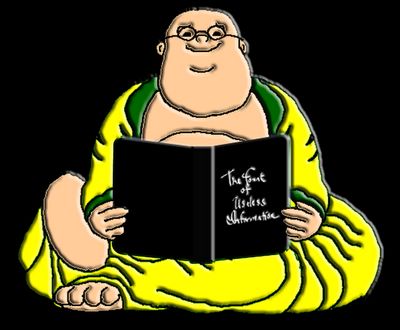It is an oft quoted statistic that X% of communication is nonverbal, with X ranging from 50 to 95, depending on who you ask and how much they want to belabour the point. Personally, I'm not sure how accurate that is or even how one would go about quantifying something like that. Statistics aside, I do concede that nonverbal communication is important and would like to take a few minutes to contemplate the most basic and yet most varied route of nonverbal communication: The art of the head nod. With just a twitch this way or that, perhaps combined with the arch of a brow, more can be communicated than in a three hour conversation with most men. Below are just a few of the myriad ways in which a mere movement of one's head can convey meaning.
"Hi." (Also "What's up?" "Very nice to meet you." "Hey."): A mostly male gesture, performed by pointing the nose directly at the person being greeted and then flicking the head upward quickly.
"Yes.": The basic affirmative gesture, created when one moves one's head up and down in a continuous motion.
"No.": The basic negative gesture, created when one moves one's head from side to side in a continuous motion.
"Thanks." (Also "you're welcome"): If possible, make eye contact with the recipient and slowly and smoothly tilt the head downward, slightly closing the eye lids as the head moves. Context is the lone difference between the "thank you" and "you're welcome" variants of this gesture.
"Come over here.": A beckoning gesture which requires the communicator to make eye contact with the subject and then flick the head in the direction away from the subject.
"Yeah, I get where you're coming from.": Most often seen in lecture halls or when one is trapped in conversation with a highly opinionated, long winded person. This gesture consists of a "yes" gesture which is smaller in scale and continues for greater than five seconds.
"I don't think so.": Used to convey that one is unsure, but does not think that the answer is yes, this gesture is performed by first raising the brow, then tilting the head slightly to one side before moving from side to side (as in the "no" gesture) in a continuos, but slower than usual motion.
Obvious "yes": Used to convey that the speaker should have known that the answer was yes before asking the question. To perform this gesture, one must first raise one's brow while opening the eyes slightly wider. This is followed by two rapid up-down motions of the head.
Obvious "no": This gesture, like the obvious yes, is used to indicate that the speaker should have realized that the answer was negative before asking the question. The brow is raised while widening the eyes, followed by two rapid side to side motions of the head. Greater than two repetitions of the side to side motion is typically considered aggressive and/or insulting.
"Look at that.": A gesture, similar to "come here", most often used by groups of less than subtle men in the presence of attractive women. Like the beckoning gesture, it begins by making eye contact with the recipient. The eyes then dart away toward the subject to which one is wishing to draw attention, followed by a quick head flick in the same direction.
Ok, there you have it. I'm sure there are more, but these are just a few examples of the diverse art of the head nod.
Afterword: Two odd facts about this post. (1) This post has been sitting in my draft section as an outline since last March, meaning it took me almost a year to get around to writing it. (2) The basic premise for this has actually been bouncing around in my head since I was a kid and saw the scene in Top Gun where Maverick is complemented by a fellow classmate ("Gutsiest move I've ever seen, man.") and responds with an almost textbook "thank you" gesture as described above. He doesn't make eye contact, but the person is seated behind him, so it's not really an option. I suppose that this actually means that it took me not since March, but since 1986 to finish this post.
January 17, 2007
And You Think a Little Head Jiggle Is Supposed to Make Me Happy?
Labels:
Random
Subscribe to:
Post Comments (Atom)


4 comments:
Today's Excellent Use of a Princess Bride Quote Award goes to.......
Craig!!
(applause)
(nods head approvingly)
Also, it took me a long time to understand that in books a "nod" is an up/down headshake in the affirmative, while a "shake" usually refers to the side/side headshake in the negatory. Why? Please tell me why!!!
Oh yeah, and I'll add one more. The eyeroll headshake: a quick eyeroll combined with slightly variable upward diagonal headnod mainly used by me in the kitchen at work when complaining about some asshat who didn't make the coffee after taking the last cup. Ususally means something like "oh, brother what a jerk!".
Dammit if I didn't find myself making these gestures as I read along.
Also the: Do you see that? We do this by meeting eyes and slowly rolling them in the direction to look while raising the eyebrows. Make sure not to turn the head and make it obvious you are gawking. Used frequently for mullets, pink hair, and men wearing wifebeaters and overalls (at the same time).
Post a Comment